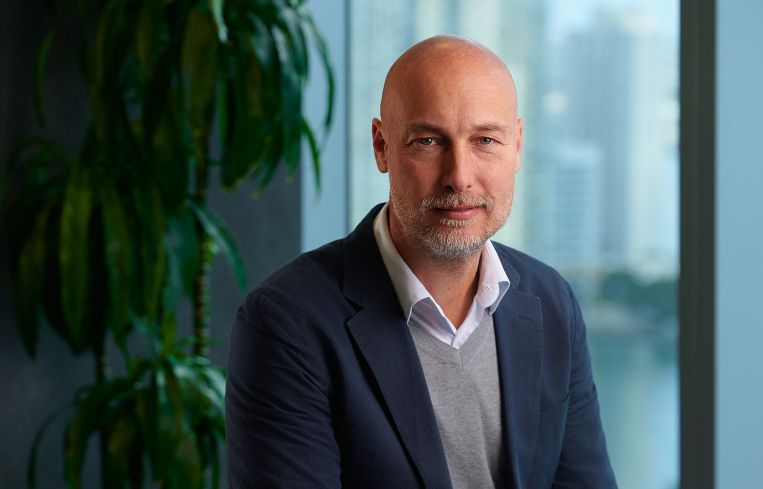Javier Lluch of South Florida’s Element Development: 5 Questions
By Jeff Ostrowski August 26, 2025 4:25 pm
reprints
Javier Lluch is building a niche as a developer of boutique luxury condo projects in Miami’s Coconut Grove neighborhood.
Lluch is the president of Miami-based Element Development, and his latest project is The Lincoln Coconut Grove. Developed with Stephan de Sabrit and Jorge Rucas of Lore Development Group, The Lincoln is slated to break ground this fall.
Lluch recently spoke with Commercial Observer about the new development, the market for high-end housing in Coconut Grove, larger market trends, challenges and more.
The following conversation has been edited for length and clarity.
Commercial Observer: Give me the overview of your current development.
Javier Lluch: This project is just across the street from my previous Coconut Grove project, the GlassHaus. The Lincoln consists of 48 large units — one-, two-, three- and four-bedrooms, all with an en suite den for remote work or whatever other use.
It has a rooftop pool with a summer kitchen, plenty of amenities, the gym, a spa, owners’ lounge, a golf simulator, all the bells and whistles that large buildings usually have, but in a boutique environment and space.
The one-bedroom units are 1,200 square feet. The two-bedroom units, on average, are 1,600 square feet. The three-bedroom condos are 2,000 square feet, and a four-bed is 2,600 square feet.
Prices are about $1,200 a square foot. The idea was to provide a luxury space, not just in size, but with finished porcelain floors, Italian kitchens and Mieli appliances, but not at the level of ultra-luxury. Twenty percent of the units have been sold.
Who’s the buyer in Coconut Grove?
The majority of our buyers are 40 to 50 and older, not younger. The Grove is a very peaceful village, though very close to what’s happening in the city. We’re finding an older crowd than in Miami Beach.
In the Grove, you have an enormous diversity of people, of ages and of regions. It’s a place for you to meet people of countries that you have yet to visit. A few times I’ve caught myself having to look them up: Where is this country?
It’s very interesting to go to a restaurant or a bar, and you see a young person, maybe in their 30s, next to an older person in their 70s talking. You don’t have a segmentation. You go to the Grove, and you see everyone from children to very old people, to grandparents, in the same space, and that’s lovely.
The residential market in South Florida has softened. Do you see that affecting you in this project?
We do. I am not sure if the market has slowed down, because I look at transactional statistics, and I see a tremendous amount of transactions, and on every sale, there is a buyer.
What I’ve noticed is that because construction costs have increased so significantly, we are left to only target that 5 percent of the population, when before, projects like this could target the top 20 percent. I believe they don’t move as fast as they used to because the price tag is 30 to 35 percent higher than what it was maybe three or four years ago. This has been pushed by the cost of construction, the land and obviously the soft cost. Everything has gone up tremendously.
What’s your biggest challenge?
The City of Miami. They are the biggest challenge. Their permitting process is painful. It’s what we have to go through to have the opportunity to shape the skyline of Miami.
I have noticed from previous projects that a lot of the inspectors and the people that worked for the city for permitting are no longer there. So if anything, they needed to keep their experienced workforce. And what I have seen is a lot of experienced City of Miami employees either retiring or moving away from it.
I would say a second thing is how diverse the demographics are for Miami, unlike other cities. We have done projects in places like Charlotte, N.C., where you only target Charlotte residents. But when you do a project in Miami, it’s incredible. We have buyers from everywhere. Spain and France and Latin America and even Boca Raton. You have to target California, Texas, Georgia, New York, New Jersey, Illinois, all of Latin America and some of Europe. You see what’s happening with the increasing taxes in England and the Scandinavian countries; many multimillionaires are leaving.
I guess that complicates your marketing strategy. You’re targeting the whole world, essentially.
How do you accomplish that?
We’re no longer fishing with the harpoon; we’re fishing with a net. You have social media, you have Google ads. Whenever there is an event like Art Basel, then you geofence the area of Art Basel. Whoever clicks, you kind of follow them and continue to market to them, regardless of where they live.
Or, if there is a top real estate event in London, then we geofence that area in London, so we see who’s interested in finding out about projects that we’re doing. The same in Mexico, Colombia, Brazil.
Jeff Ostrowski can be reached at jostrowski@commercialobserver.com.



